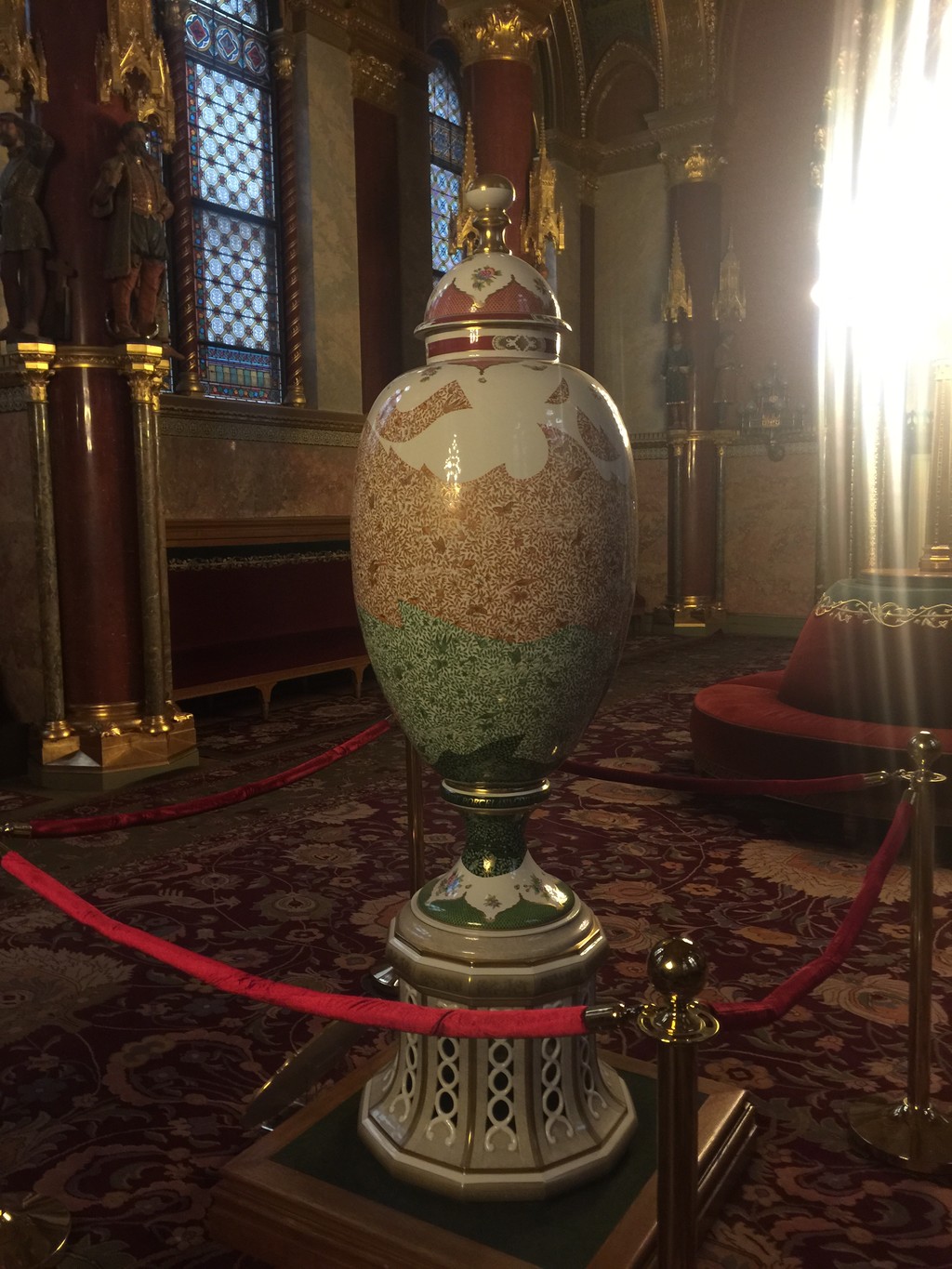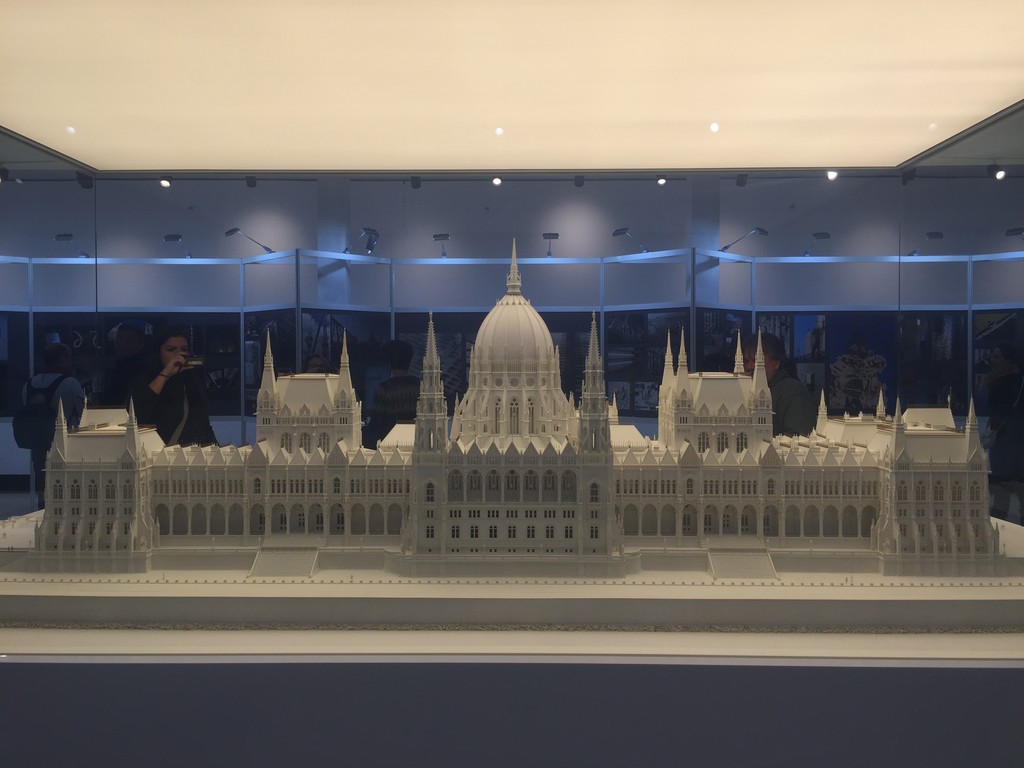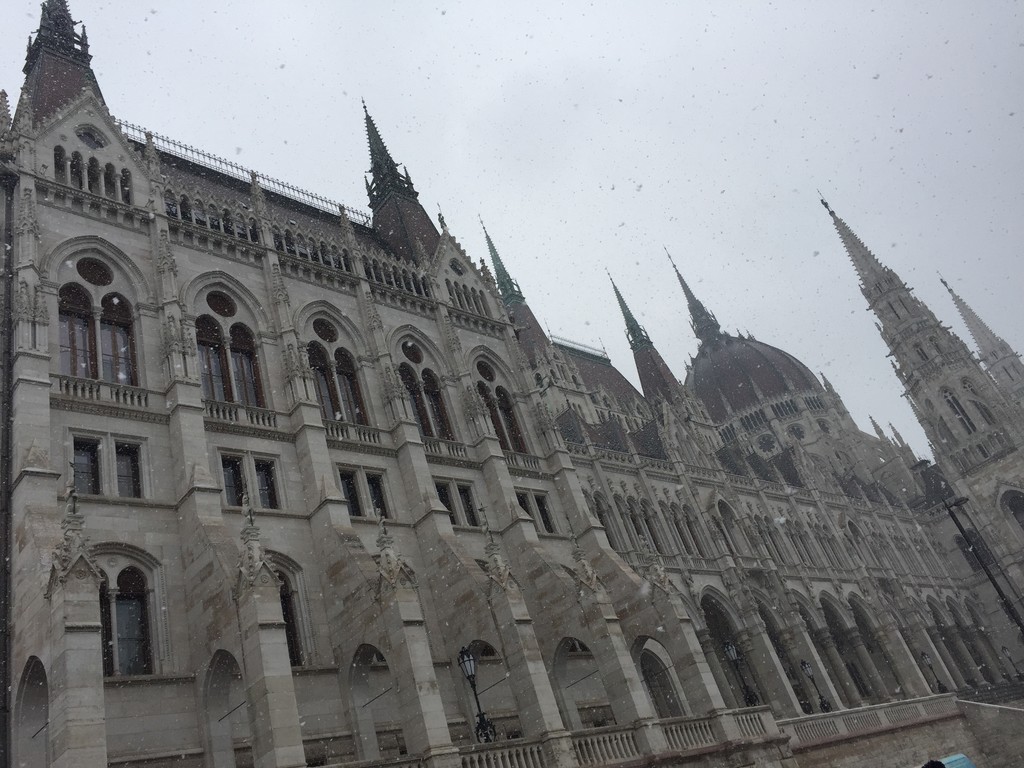Parliament of Budapest
- Address: Budapest, Kossuth Lajos tér 1-3, 1055 Hungría
- Tags:
 What to see Budapest,
Budapest,
Hungary
What to see Budapest,
Budapest,
Hungary
- Telephone: +36 1 441 400
- Website: www.parlament.hu/
Parliament of Budapest

The Parliament Building of Budapest is, without a doubt, the most renowned Hungarian treasure in the whole country. I have spent various years wanting to visit this city just to admire its beauty and from then on, it did not disappoint me. On the contrary, I consider it to be one of the monuments that have impacted me the most, more than all of those that I had seen in Europe up to that moment.
I looked at it for the first time from the Buda side, the castle hill, or more specifically, from the "Fishermen's Bastion". Unfortunately, it was quite cloudy and foggy that day, so the views were not as wonderful as they could have been on a more sunny day, but certainly nothing could have diminished the beauty of the Parliament building on the other side of the river.

A couple of hours later, when we finished our route through Buda, we crossed towards Pest and in this part of the city, the Parliament building was our first stop. We went over the Széchenyi Chain Bridge and we caught the tram as it was beginning to rain and we didn't want to get wet. It was barely 5 minutes and two stops on the tram to get to the square where the gigantic architectonic building stands, on the edge of the Danube River. We got off from the tram stop that is named the same thing as the plaza it brings you to: Kossuth Lajos Tér, the name of the Hungarian President in 1849. This person, who took on the role of lawyer, journalist, and politician was honoured throughout his life, even in the United States, as an activist for freedom and an advocate for democracy in Europe. His monument, which also acts as a memorial to the 1956 Hungarian Revolution, can be seen in front of the Parliament building.

The building in itself is a magnificent example of a Neo-Gothic architectural style (even though it shows Renaissance and Baroque-style elements as well) and it has more than 100 years of age. In the decade 1880 a public auction was carried out for the design of the Parliament building. The construction, based on the winner's plan, was started in 1885 and the building was inaugurated on the 1, 000 year anniversary of Hungary in 1896. However, it was not until 1902 when the building was completely finished by architect Imre Steindl. You can also find two other spectacular buildings in the same plaza, both facing towards the Parliament building bur without creating shadows. They are the Ethnology Museum and the Ministry for Agriculture. The Parliament of Budapest building is the third largest parliament building in the world, after the Parliament of Romania and the Parliament of Argentina. It has 691 rooms, 268 metres length, 118 metres width and 96 metres height, the same as Saint Stephen's Basilica in the centre of Budapest. During the Communist era, they added a large red star on the central tower, on top of the dome. However, after the fall of the Communist regime, they removed the star. The walls are made from a limestone rock, but due to the constant bad weather in Hungary, they are continually worn down and are always needing restoration works.
The parliament buildings is symmetrical on the east and west wings (the upper and lower chambers) and it is actually only the lower chamber that is used, as the Senate was abolished. 40 million bricks were used for its construction.

In terms of the political system in Hungary, it is composed of a parliamentary representative democratic republic. Its legislature goes through a single-chamber National Assembly which has 386 representatives, each elected for a four-year term. The election system is said to be one of the most complicated in Europe. Half of the representatives are elected in single-seat constituencies and the other half of them are elected from party lists. The Prime Minister is chosen by the members of parliament and their vote majority. The President of the Republic, chosen for a 5-year term, has more of a ceremonial role. Technically, he is the Commander of the Armed Forces and appoints the Prime Minister.

There are various guided tours through the interior, and of course, I took advantage of this. The price was not expensive and I would say that it is very much worth it: 2000HUF, €6. 50 for members of the EU. Visits are only available when a session of the National Assembly isn't on. The tour lasts between 50 minutes and one hour, and is also available in several languages. We took it in Spanish so that we didn't lose any details of what we were told. We had to go through a security check like the one at the airports before starting the visit. During the visit, you can see several parts of the Parliament building: the old House of Lords, the Hungarian Crown Jewels, the main entrance staircase and corridors and the part of the Senate that is already in disuse. As I mentioned earlier, the wings are symmetrical and so we can imagine that there are similar rooms in the other part.
The part that caught my attention the most was the decoration of the main staircase, with three long red carpets, lamps, columns, arches and the ceiling decoration, all adorned in gold that gave us an idea of the luxury inside the walls.

Another unmissable sight was Hungary's Crown Jewels that were arranged in the Dome Room. They told us the history of how they were lost and stolen on numerous occasions. Unfortunately, this is the only place where photographs cannot be taken. After the Second World War, they were transported to Western Europe and finally given to the US army for the Soviet Union's deposit. During much of the Cold War, the Jewels were kept in the Bullion Depository in Fort Knox, Kentucky, as was a huge portion of the American giant's gold reserves. They were finally returned to Hungary under the presidency of Jimmy Carter in 1978. Today, the jewels are guarded by two soldiers who rotate in circles around every 15 minutes and change every hour or so. I had the pleasure of witnessing the change and the truth that I felt like I was in World War II when I heard them pronounce untranslatable Hungarian words. This room also has various statues of the Kings of Hungary, lead by St. Stephen, the first King of Hungary.

And finally, the Old Upper Chamber impressed me because of its small size, when I thought about it, I imagined it to be something huge, like the Chamber of the European Parliament in Brussels but it was nothing like that. It is a small room with tables already set in order for the senators, with four Hungarian flags placed on both sides of the main lectern, and the room is not very high either.

Finally, on the way out, we were left with a few minutes to spend in an exhibition hall. It showed photographs of the construction of the Parliament building, as well as the renovation work and a model showing the majesty of the building.

Photo gallery
Content available in other languages
- Español: Parlamento de Budapest
Rate and comment about this place!
Do you know Parliament of Budapest? Share your opinion about this place.

























